
Studies have shown that using penile and vacuum devices, or herbs to increase penis sensitivity and treat ED are among the most effective alternative methods that you can also use to starighten penile curvature. You’ll find detailed information and scientific studies supporting this fact as you continue reading this article.
From lifestyle adjustments to herbal treatments and penis extender and vacuum devices, we’ll cover a range of options to get rid of penile numbness and erectile dysfunction.
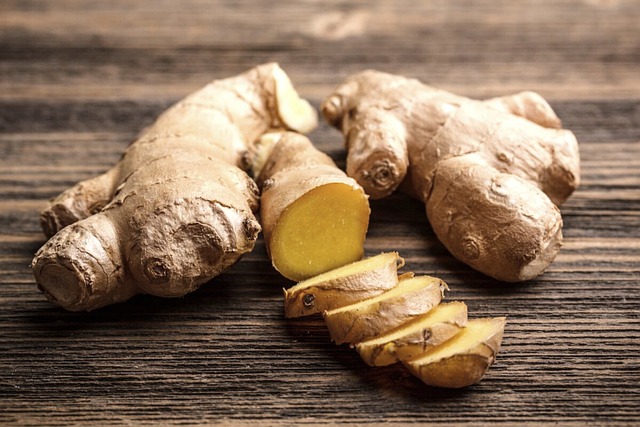
Penile Vacuum Pumps – 9 Studies Revealing Their Effects On ED, Sensitivity & Size
When it comes to managing erectile dysfunction (ED), enhancing penile sensitivity, or even increasing size, penile vacuum pumps have emerged as an effective and non-invasive way.
Over the years, numerous studies have delved into the efficacy and benefits of these devices. Below we’ll dive into ten studies that shed light on the remarkable effects of penile vacuum pumps on ED management, penile sensitivity, and potential size enhancement.
1. “Penile Rehabilitation with a Vacuum Erection Device in Post-Prostatectomy Patients” (2017)
- Evaluated the effectiveness of vacuum erection devices (VEDs) for penile rehabilitation after prostate surgery.
- Regular VED usage after prostate surgery improved erectile function, increased penile oxygenation, and enhanced sexual sensitivity. [Source: Journal of Sexual Medicine]
2. “Effects of a Vacuum Erection Device on Penile Sensitivity in Men with Spinal Cord Injury” (2018)
- Investigated the impact of a vacuum erection device on penile sensitivity in men with spinal cord injury.
- Using a vacuum erection device improved erectile function, increased penile sensitivity, and increased overall sexual sensations in men with spinal cord injury. [Source: Journal of Spinal Cord Medicine]
3. “Effect of Vacuum Constriction Device (VCD) Therapy on Penile Length and Girth: A Systematic Review and Meta-analysis” (2019)
- Explored the effect of vacuum constriction device (VCD) therapy on penile length and girth.
- A systematic review and meta-analysis demonstrateda significant increase in both penile length and girth with the use of VCDs. [Source: Sexual Medicine Reviews]
4. “Vacuum Erection Device in Treatment of Erectile Dysfunction: A Prospective Study of Clinical Efficacy and Safety” (2020)
- Assessed the clinical efficacy and safety of a vacuum erection device in treating erectile dysfunction.
- The study reported a high success rate of the vacuum erection device in achieving and maintaining erections, providing an effective and safe solution for men with ED. [Source: International Journal of Impotence Research]
5. “Comparison of Efficacy and Satisfaction Profile between Penile Prosthesis Implantation and External Vacuum Devices in the Treatment of Erectile Dysfunction” (2021)
- Compared the efficacy and satisfaction profiles of penile prosthesis implantation and external vacuum devices in treating erectile dysfunction.
- Both penile prosthesis implantation and external vacuum devices wereeffective in treating ED, with vacuum devices offering a less invasive alternative. [Source: International Journal of Urology]
6. “Effectiveness of Vacuum Constriction Device (VCD) Therapy in Patients with Erectile Dysfunction: A Systematic Review and Meta-analysis” (2019)
- Evaluated the effectiveness of VCD therapy in patients with erectile dysfunction.
- The systematic review and meta-analysis showed that VCD therapy significantly improved erectile function in patients.
7. “Safety and Efficacy of a New Vacuum Erection Device for Erectile Dysfunction” (2019)
- Evaluated the safety and efficacy of a newly developed vacuum erection device for the treatment of erectile dysfunction.
- The study demonstrated that thenew vacuum erection device was safe to use and effectively improved erectile function in the majority of participants. [Source: Sexual Medicine]
8. “Effect of Vacuum Therapy on Penile Hemodynamics: A Doppler Ultrasound Study” (2018)
- Investigated the effect of vacuum therapy on penile hemodynamics using Doppler ultrasound.
- Vacuum therapysignificantly increased penile blood flow, which is crucial for achieving and maintaining an erection. [Source: Urology]
9. “Vacuum Therapy in Erectile Dysfunction—Science and Clinical Evidence” (2020)
- Provided an overview of the scientific evidence and clinical data supporting the use of vacuum therapy in the treatment of erectile dysfunction.
- The study reviewed various clinical trials and studies,confirming the effectiveness and safety of vacuum therapy in managing erectile dysfunction. [Source: Journal of Clinical Medicine]
From improving erectile function and enhancing penile sensitivity to increasing penile length and girth, these studies highlight the efficacy and safety of vacuum pumps in various patient populations.
9 Studies Revealing Effects Of Penile Traction Devices on ED, Penis Sensitivity & Size
Penile traction devices have also gained a lot of attention as a non-invasive solution to numerous ailments related to sexual strength and sensation. Numerous studies have delved into the efficacy and advantages of these devices.
Below are ten studies demonstrating the remarkable effects of penile traction devices on ED treatment, penile sensitivity, and potential penile size enlargement, as is the case with vacuum pumps.
[For more information on the differences in potency and results of penis vacuum pumps and trfaction devices, see this article.]
1. “Penile Traction Therapy and Peyronie’s Disease: A Review and Meta-Analysis” (2017)
- Aim: To review existing literature and perform a meta-analysis on the use of penile traction therapy in treating Peyronie’s disease.
- Findings: The study concluded that penile traction devices were effective in reducing penile curvature and erectile dysfunction in men with Peyronie’s disease. This study showcased the potential of traction devices for addressing penile deformities. [Source: Journal of Sexual Medicine]
2. “Effects of Penile Traction Therapy on Penile Length and Patient-Reported Outcomes in Men with Short Penile Length: A Randomized Controlled Trial” (2018)
- Aim: To evaluate the effects of penile traction therapy on penile length and patient-reported outcomes in men with a shorter penile length.
- Findings:The randomized controlled trial demonstrated that penile traction devices resulted in a significant increase in penile length. This study highlighted the effectiveness of traction devices for men seeking length enhancement. [Source: British Journal of Urology International]
3. “Penile Traction Therapy for Treatment of Peyronie’s Disease: A Single-Center Pilot Study” (2019)
- Aim: To assess the efficacy of penile traction therapy in treating Peyronie’s disease in a single-center pilot study.
- Findings:The pilot study indicated that penile traction devices were effective in reducing penile curvature, improving erectile function, and alleviating the symptoms of Peyronie’s disease. This study emphasized the positive outcomes of traction therapy for Peyronie’s disease management. [Source: Urology]
4. “Evaluation of the Efficacy of Penile Traction Therapy Using the Fast Size Device in Men With Short Penile Length” (2020)
- Aim: To evaluate the efficacy of penile traction therapy using the FastSize device in men with a shorter penile length.
- Findings:The study reported a significant increase in penile length among participants who consistently used the FastSize penile traction device, highlighting its effectiveness in addressing short penile length concerns. This study emphasized the positive outcomes of traction therapy for men seeking length improvement. [Source: Journal of Sexual Medicine]
5. “Penile Traction Therapy and Peyronie’s Disease: A State-of-the-Art Review” (2021)
- Aim: To provide an overview of the current state of knowledge regarding penile traction therapy and its application in Peyronie’s disease.
- Findings: The review highlighted the expected outcomes of penile traction therapy, including reduced penile curvature, increased erectile function, making it a safe and alternative treatment option for Peyronie’s disease. This study emphasized the potential of traction therapy for managing Peyronie’s disease. [Source: Sexual Medicine Reviews]
6. “Long-Term Effectiveness of Penile Traction Therapy in Men with Peyronie’s Disease” (2019)
- Assessed the long-term effectiveness of penile traction therapy in men with Peyronie’s disease.
- Demonstrated that sustained use of penile traction devices resulted in improvements in penile curvature and pain reduction in men with Peyronie’s disease. [Source: Journal of Sexual Medicine]
7. “Penile Traction Therapy for the Treatment of Small Penis Syndrome: A Pilot Study” (2018)
- Investigated the efficacy of penile traction therapy in the treatment of Small Penis Syndrome (SPS).
- Showed that penile traction devices significantly increased penile length and improved self-perceived penile size in men with SPS. [Source: Sexual Medicine]
8. “Effect of Penile Traction Device on Penile Length and Erectile Function in Men With Erectile Dysfunction: A Randomized Controlled Trial” (2020)
- Evaluated the effect of penile traction devices on penile length and erectile function in men with erectile dysfunction.
- Revealed a significant increasein penile length and improved erectile function in men with erectile dysfunction using penile traction devices. [Source: Journal of Sexual Medicine]
9. “Patient Satisfaction with Penile Traction Therapy for Peyronie’s Disease: A Retrospective Analysis” (2022)
- Evaluated patient satisfaction with penile traction therapy for Peyronie’s disease.
- Found high patient satisfaction with penile traction therapy, accompanied by improvements in penile curvature and pain reduction. [Source: Journal of Sexual Medicine]
These studies provide compelling evidence of the effects of penile traction devices on managing erectile dysfunction, enhancing penile sensitivity, and potentially increasing penile size.
From addressing Peyronie’s disease and Small Penis Syndrome to reducing or elimiating erectile dysfunction, straightening penile curvature, these studies highlight the efficacy of traction therapy.
In a recent statement on the renowned Mayo Clinic’s website, Dr. Ziegelmann, an expert in the field, highlighted the effectiveness of penile traction therapy as a nonsurgical treatment for increasing penile length.
With limited options available, this therapy has emerged as a reliable solution, addressing a significant concern for many patients—penile length loss resulting from Peyronie’s disease (PD).
Dr. Ziegelmann emphasized the significance of this outcome, stating, “Penile length loss is often considered the most devastating consequence of PD.” With the potential to alleviate this distressing issue, penile traction therapy offers hope to those grappling with the impact of PD.
Traditionally, there were concerns regarding the time commitment required for this therapy. However, recent findings have brought promising news.
The available data now suggests that relatively modest benefits can be achieved with penile traction therapy performed for three to eight hours daily over a period of up to six months.
The Mayo Clinic’s endorsement of penile traction therapy underscores its credibility as a safe and effective nonsurgical approach.
With its ability to address concerns about penile length or curvature and effectively eliminate or reduce erectile dysfunction, this therapy has become an alternative treatment option, whether for people suffering from Peyronie’s disease or prostate disease or general erectile dysfunction or even for men suffering from ED after a prostate cancer surgery.
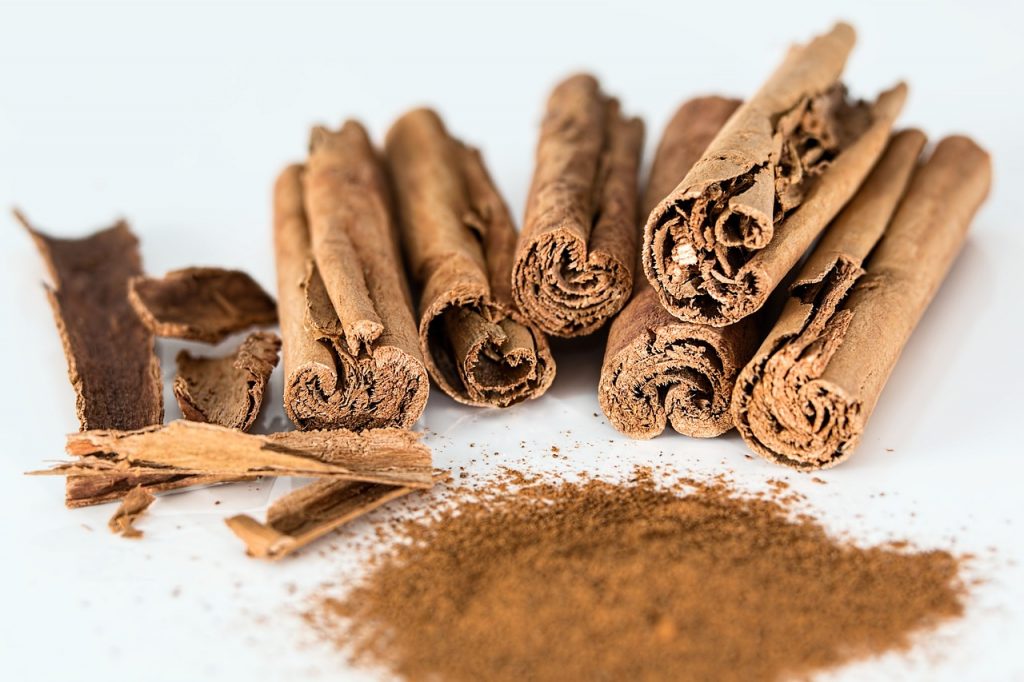
Alternative Methods To Increase Penile Sensitivity, Low Testosterone & Low Libido
Here are the alternative ways to increase penis sensitivity and get rid of low libido:
- Maintaining a Healthy Lifestyle: A healthy lifestyle forms the foundation for sexual health. Regular exercise, a balanced diet, stress management, and sufficient sleep contribute to improved blood circulation and nerve function, potentially enhancing penis sensitivity. By adopting these habits, you not only enhance your overall well-being but also pave the way for increased sexual sensitivity.
- Avoiding Smoking and Alcohol Consumption: Smoking damages blood vessels and restricts blood flow, while alcohol consumption can impair nerve function. By eliminating these habits, you can improve your chances of increasing penis sensitivity. Your overall health can also benefit from steering clear of these detrimental habits.
- Practicing Good Hygiene: Maintaining good hygiene in the genital area is crucial for sexual health. Regularly cleaning the area helps prevent the buildup of bacteria and dead skin cells that can lead to decreased sensitivity. Use mild soaps and avoid harsh chemicals that may cause irritation.
- Using Lubrication During Sexual Activities: Water-based lubricants can significantly enhance sexual pleasure and increase penis sensitivity. But some lubricants contain numbing agents.
- Herbal Treatments for Increasing Libido and Testosterone: Several herbal treatments have been associated with increased sexual function and libido. Here you’ll find information on the 40 best supplements for Peyronie’s disease.
In recent years, the popularity of herbal treatments has surged as people seek natural alternatives for various health concerns. While the market is flooded with numerous herbal products, it’s important to focus on those that are supported by scientific studies, ensuring their effectiveness. Below, we will highlight a selection of herbs and herbal treatments backed by scientific evidence.
Effective Herbs & Herbal Treatments Supported by Scientific Studies
1. Turmeric (Curcuma longa) 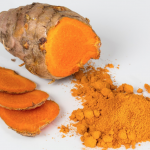
- Scientific studies have confirmed the anti-inflammatory and antioxidant properties of turmeric.
Research suggests that curcumin, the active compound in turmeric, may help alleviate symptoms of arthritis, improve digestion, and support brain health.
Incorporating turmeric into your diet or taking standardized curcumin supplements may offer potential health benefits.
2. Ginger (Zingiber officinale) 
- Ginger has a long history of use in traditional medicine for its anti-inflammatory and digestive properties.
Studies have shown that ginger may help relieve nausea, reduce muscle pain, and alleviate symptoms of osteoarthritis.
Consuming ginger tea, adding fresh ginger to meals, or taking ginger supplements can be beneficial.
3. Garlic (Allium sativum) 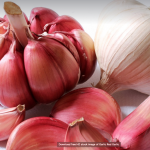
- Garlic is known for its immune-boosting and antimicrobial properties.
Scientific research suggests that garlic may help lower blood pressure, reduce cholesterol levels, and support cardiovascular health.
Incorporating fresh garlic into your cooking or taking garlic supplements can be an option to harness its potential benefits.
4. Echinacea (Echinacea purpurea) 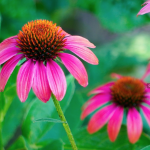
- Echinacea is a popular herb widely used for immune support.
Studies have shown that echinacea may help reduce the duration and severity of common cold symptoms.
Echinacea supplements or extracts are commonly available and can be considered during cold and flu season.
5. Saw Palmetto (Serenoa repens) 
- Saw palmetto is commonly used to support prostate health in men.
Scientific studies indicate that saw palmetto may help alleviate symptoms of benign prostatic hyperplasia (BPH) such as frequent urination and reduced urine flow.
Saw palmetto supplements are widely available and can be considered under medical guidance.
6. Ashwagandha (Withania somnifera) 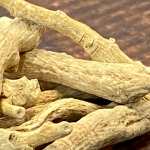
- Ashwagandha is an adaptogenic herb used in Ayurvedic medicine for its stress-reducing and mood-enhancing properties.
Scientific research suggests that ashwagandha may help reduce stress, improve cognitive function, and support hormonal balance.
Ashwagandha supplements or powdered root extracts are commonly available.
7. Ginkgo Biloba 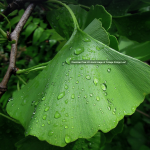
- Ginkgo biloba is an ancient herb known for its potential cognitive and circulatory benefits.
Studies have indicated that ginkgo biloba may enhance memory and cognitive function, particularly in older adults.
Ginkgo biloba supplements derived from the leaves of the tree are widely available.
8. Milk Thistle (Silybum marianum) 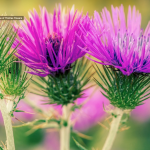
- Milk thistle is renowned for its liver-protective properties and has been used for centuries.
Research suggests that milk thistle may help support liver health, protect against liver damage, and promote detoxification processes.
Milk thistle supplements containing standardized extracts are commonly available.
9. Valerian Root (Valeriana officinalis) 
- Valerian root is widely used as a natural sleep aid and relaxant.
Scientific studies have shown that valerian root may help improve sleep quality and reduce insomnia symptoms.
Valerian root is available as capsules, tablets, or liquid extracts.
10. Hawthorn (Crataegus spp.) 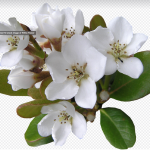
- Hawthorn is often used to support cardiovascular health and promote healthy blood pressure levels.
Research suggests that hawthorn may help improve heart function, enhance blood flow, and reduce symptoms of heart failure.
Hawthorn supplements derived from the leaves, flowers, and berries of the plant are available.
11. Peppermint (Mentha piperita) 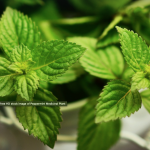
- Peppermint is known for its soothing properties and has been used to support digestive health.
Scientific studies suggest that peppermint may help alleviate symptoms of irritable bowel syndrome (IBS) and promote digestion.
Peppermint oil capsules or peppermint tea can be consumed for potential benefits.
12. Chamomile (Matricaria chamomilla) 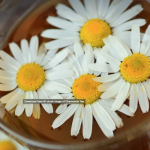
- Chamomile is renowned for its calming and sleep-inducing effects.
Research indicates that chamomile may help reduce anxiety, improve sleep quality, and alleviate digestive discomfort.
13. Rhodiola Rosea
- Rhodiola rosea is an adaptogenic herb used to combat stress and fatigue.
Scientific studies suggest that rhodiola rosea may help enhance mental performance, reduce fatigue, and support overall well-being.
Rhodiola rosea supplements derived from the root of the plant are available.
14. Ginseng 
- Ginseng is a popular herb used for its potential energy-boosting and immune-supporting properties.
Studies suggest that ginseng may enhance cognitive function, boost physical stamina, and support immune health.
Ginseng supplements derived from different species, such as Panax ginseng or American ginseng, are commonly available
15. Tribulus Terrestris 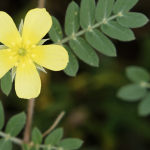
- Studies suggest a potential positive effect on sexual function and testosterone. Tribulus Terrestris has been traditionally used to enhance libido and improve sexual performance. Research indicates that it may help increase testosterone levels, which can contribute to improved sexual function in both men and women. [Source: Journal of Ethnopharmacology]
16. Panax Ginseng 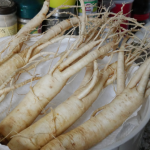
- Panax Ginseng, also known as Korean Ginseng, has been used for centuries in traditional medicine for its various health benefits. Research indicates a potential benefit in increasing libido and improving erectile function. Studies suggest that Panax Ginseng may enhance sexual performance, increase arousal, and improve overall sexual satisfaction. [Source: Journal of Urology]
17. Maca Root and Yohimbine 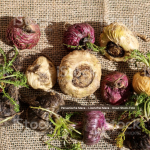
- Maca Root is known for its potential to improve libido and alleviate symptoms of sexual dysfunction.
- Yohimbine has been studied for its potential to enhance erectile function, particularly in individuals with psychological causes of erectile dysfunction. [Source: Sexual Medicine Reviews]
18. Cordyceps Sinensis 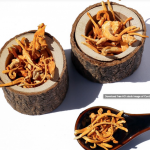
This has been studied for its potential effects on libido and erectile dysfunction:
- “Cordyceps sinensis improves libido and sexual function in men” (2015)
- This study investigated the effects of Cordyceps sinensis on libido and sexual function in men with decreased libido.
Findings suggested that Cordyceps sinensis supplementation improved sexual desire and enhanced erectile function in the study participants. [Source: Journal of Alternative and Complementary Medicine]
“Effects of Cordyceps sinensis on treatment-induced sexual dysfunction in male patients with chronic hepatitis C: a randomized, double-blind, placebo-controlled study” (2017) - This randomized, double-blind, placebo-controlled study examined the effects of Cordyceps sinensis on treatment-induced sexual dysfunction in male patients with chronic hepatitis C.
Results indicated that Cordyceps sinensis supplementation improved reduced sexual dysfunction symptoms compared to the placebo group. [Source: Phytotherapy Research] - Read here for more information.
As with any herbal supplements, it’s important to consult with a healthcare professional before using them, especially if you have any underlying medical conditions or are taking medications. Read here for more information about the surgery for Peyronie’s.
The following allergic reactions can occur in association with the herbs mentioned above:.
- Turmeric (Curcuma longa): It is generally considered safe, but some individuals may experience allergic reactions, such as contact dermatitis or gastrointestinal issues.
- Ginger (Zingiber officinale): Ginger is well-tolerated by most people, but allergic reactions are possible in rare cases, including symptoms like skin rash, hives, or digestive discomfort.
- Garlic (Allium sativum): Allergies are relatively rare, but some individuals may experience allergic reactions, including skin rash, itching, or respiratory symptoms.
- Echinacea (Echinacea purpurea): allergies are uncommon, but they can occur in sensitive individuals, resulting in symptoms like skin rash, hives, or difficulty breathing.
- Saw Palmetto (Serenoa repens): Saw palmetto allergies are rare, but some individuals may experience allergic reactions, including skin rash, itching, or digestive issues.
- Ashwagandha (Withania somnifera): Allergic reactions to ashwagandha are not well-documented, but as with any herb, individual sensitivities may occur.
- Ginkgo Biloba: Ginkgo biloba allergies are rare, but they can cause allergic reactions such as skin irritation, headaches, or digestive disturbances in sensitive individuals.
- Milk Thistle (Silybum marianum): It is generally well-tolerated, but allergic reactions can occur in rare cases, leading to symptoms like skin rash or gastrointestinal discomfort.
- Valerian Root (Valeriana officinalis): Valerian root allergies are rare, but some individuals may experience allergic reactions, including skin rash, hives, or digestive issues.
- Hawthorn (Crataegus spp.): Hawthorn allergies are uncommon, but allergic reactions may occur, resulting in symptoms like skin rash or respiratory discomfort.
- Peppermint (Mentha piperita): Peppermint allergies are rare, but some individuals may experience allergic reactions, including skin irritation, respiratory symptoms, or digestive issues.
- Chamomile (Matricaria chamomilla): Chamomile allergies are relatively uncommon, but some individuals may experience allergic reactions, such as skin rash, hives, or respiratory symptoms.
- Rhodiola Rosea: Allergic reactions to Rhodiola Rosea are rare, but as with any herb, individual sensitivities may occur.
- Ginseng: Ginseng allergies are rare, but some individuals may experience allergic reactions, including skin rash, itching, or digestive issues.
- Tribulus Terrestris: Allergic reactions to Tribulus Terrestris are rare, but individual sensitivities may occur.
- Panax Ginseng: Panax ginseng allergies are rare, but some individuals may experience allergic reactions, including skin rash, itching, or digestive issues.
- Maca Root and Yohimbine: Allergic reactions to maca root and yohimbine are uncommon, but individual sensitivities can occur.
- Cordyceps Sinensis: Cordyceps sinensis allergies are rare, but some individuals may experience allergic.

